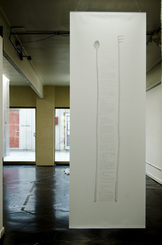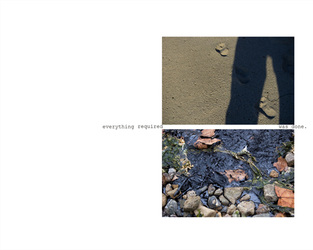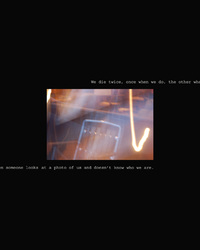Image / Text
Recipes
Installation at BridgeMaker Arts, Richmond, CA. 2016 "Stained Recipes", Graphite and watercolor on Mylar, 72" x 36"
"Stacked Recipes with Spoon and Fork", Graphite on Mylar, 102" x 36" "Stained Recipes", details, Graphite and watercolor on Mylar, 72" x 36"
These pieces incorporate handwritten recipes from my grandmother, along with one from my mother that I have saved and kept in an old metal card file. Though I no longer make any of these recipes (I have different food choices due to allergies), there is something about the family history of these time worn recipes and the hand writing itself that reminds me of home. Some of the recipe cards are so stained with food spills that parts of the text are almost illegible, a testament to their constant usage over many years. In creating these pieces, I drew from material developed in three prior sculptural installation projects, In Search for My Grandmother’s Bread Bowl, Spoons, and She Held Close the Essential. The physical process of writing and re-writing the recipes, following in my grandmother and mother’s handwriting, became a meditation on time, place, and the people who I carry with me as home.
Food is a basic sustenance that forms a connection to people and place. Traditional, cultural and ritual foods are sourced and prepared in certain ways – the spices and ingredients, the textures and smells, the tools and utensils, all combine in the physical process of making. The sharing of meals with family and friends can define a central aspect of home, no matter where home may be at any given time. During WWII, women in the Theresienstadt concentration camp, who had no possibility of preparing food, shared recipes of their favorite traditional foods; the simple act of recounting and imagining became a defiance of circumstance, a means of transporting the essence of home into and beyond the present.
"Stacked Recipes with Spoon and Fork", Graphite on Mylar, 102" x 36" "Stained Recipes", details, Graphite and watercolor on Mylar, 72" x 36"
These pieces incorporate handwritten recipes from my grandmother, along with one from my mother that I have saved and kept in an old metal card file. Though I no longer make any of these recipes (I have different food choices due to allergies), there is something about the family history of these time worn recipes and the hand writing itself that reminds me of home. Some of the recipe cards are so stained with food spills that parts of the text are almost illegible, a testament to their constant usage over many years. In creating these pieces, I drew from material developed in three prior sculptural installation projects, In Search for My Grandmother’s Bread Bowl, Spoons, and She Held Close the Essential. The physical process of writing and re-writing the recipes, following in my grandmother and mother’s handwriting, became a meditation on time, place, and the people who I carry with me as home.
Food is a basic sustenance that forms a connection to people and place. Traditional, cultural and ritual foods are sourced and prepared in certain ways – the spices and ingredients, the textures and smells, the tools and utensils, all combine in the physical process of making. The sharing of meals with family and friends can define a central aspect of home, no matter where home may be at any given time. During WWII, women in the Theresienstadt concentration camp, who had no possibility of preparing food, shared recipes of their favorite traditional foods; the simple act of recounting and imagining became a defiance of circumstance, a means of transporting the essence of home into and beyond the present.
scrap/book/yard
For several years I have been collecting bits of text, culled from poems and prose, radio and live interviews, newspaper clippings, the Internet, as well as my own writing. I have also begun listening, noting, and collecting sounds in much the same manner. Intrigued by notions of categorization, and the implicit assumptions of hierarchy and value, I began exploring the dual notions of ‘scrap book’ – a container for what gets selectively chosen, preserved, highlighted and archived, often preciously – and at the other edge of the spectrum ‘scrap yard’, a dumping ground for detritus, materials discarded as useless and worthless, buried, or occasionally salvaged and recycled into new forms. Both contexts afford a fascinating and, at times, disturbing inquiry into functionality and meaning, which play a role in personal and social memory. Since everything we remember has an emotional component to it (otherwise we wouldn’t remember it), how we choose to collect, categorize, store, dispose or dispense with anything carries with it the subjective weight of our experience of it. By exposing and reconfiguring the scrap mix, my desire is to disrupt our experience and understanding of it and open up the possibility of sensing different possibilities and priorities.










